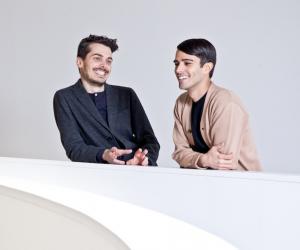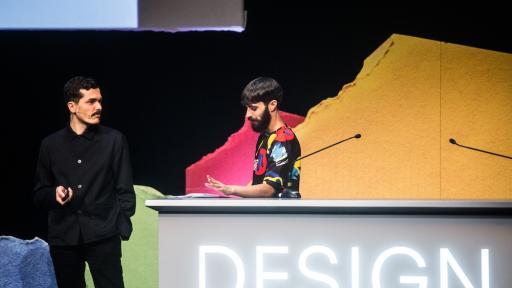Since their start as designers, Andrea Trimarchi and Simone Farresin of Studio Formafantasma have worked together very closely. After meeting as students in Florence, they enrolled for a Master’s degree at the Design Academy in Eindhoven as a team, graduating with a joint project – the first time in the school’s history that this had happened.
Their graduate project, Moulding Tradition, crystallises their materials-driven, research-based approach to design. Based on a study of Sicilian ceramic traditions as far back as the 17th century, the duo’s work explored the issues of immigration, assimilation and the historical cross-flow of culture between North Africa and Italy until today’s times and, ultimately, its effect on production. The end result was a collection of refined ceramic vessels featuring portraits of people who have migrated to Italy out of a political or social exile.
After graduating, the Italian duo founded Studio Formafantasma in Amsterdam.
Formafantasma means a ghost shape or form, says Farresin. It’s a reference to the way we work.
They go on to compare their method to a plant: “You always have a seed, which is the idea; it then starts to grow and opens up in different ways. Our process is organic because we let it grow,” says Farresin.
Much of the duo’s work starts with unassuming observations. “We believe that naivety is a great starting point in design,” says Farresin. The belief that a manmade technique or process can’t be revisited because it is already established is short-sighted, they say. Their work often leads to researching the basic principles of a particular technique or process to discover its contemporary meaning.
The studio’s latest work explores how lava can be used as a design material. “We have always been fascinated by the volcano in Sicily,” says Trimarchi, “and volcanic matter is something that has interested us because of its unpredictability.”
After a few years of investigating the material’s possibilities, the De Natura Fossilium was born. The collection is made up of tables and chairs as well as more experimental pieces such as vases and boxes made from molten lava.









